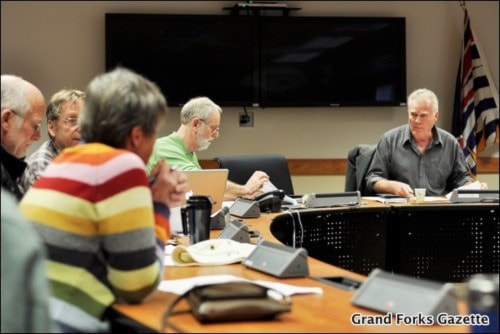The Grand Forks deer committee introduced a draft of a deer management plan at their meeting on Friday.
Coun. Chris Moslin, a member of the deer committee, said the plan highlights various methods of control that could be implemented in the future.
Some of the methods have already begun.
These include informing the public on what happens when deer are fed, as well as signage that will be placed around the Trans Canada Trail, depicting information, drawn by school children.
The more drastic measures, such as relocation and sharpshooting, are included in the draft, which is far from being implemented.
Moslin said that those options that lower the number of deer in town were included because of the results of deer survey.
“The majority of people wanted (the number of deer) reduced somewhat,” Moslin said, adding that reducing to 2007 levels would result in a 30 to 40 per cent reduction.
“We are still considering all the options,” Mayor Brian Taylor, who chairs the committee, said.
Taylor also talked about a contractor, Jim Kujala, who works just south of the border and specializes in relocations and trapping. The committee is looking at having him come in to do a presentation.
“In the relocation that he did, which was approximately 100 deer, that he did in the Republic (Washington) area, he had one death by what he assumed was a heart attack, and one broken leg,” Taylor said. “So a very low mortality rate.”
The feeding issue is the biggest issue they had in Republic, and Taylor says that in those places that feed the deer, the population has gone right back up to what it was.
Taylor said that they had to place fines on deer feeding before it stopped in the areas there.
The mayor said the quote for relocation runs about $250 to 300 per animal and involves the animals being rounded up in a squeeze and then relocated to an area approximately 60 to 120 kilometers away.
“He is very humane about it,” said Taylor. The deer are then left in the trailer for a day or so to bond with each other before being released.
Taylor added that the deer have not been found to return and noted that the cost of sharpshooting is comparable.
Jenny Coleshill, a member of the committee, talked to a member of PETA in the U.S. to try to work with the organization.
Coleshill reported that PETA favoured sharpshooting over relocation because they say it is more humane.
Moslin hopes to have a draft in good enough shape to show at the meeting with the other deer committees of Cranbrook, Kimberley, Sparwood and Invermere, which they will be meeting with at the end of April.
